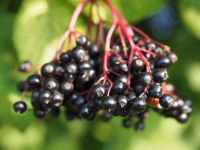Resource Library

Welcome to the Eurofins US Food, Feed, and Supplement testing laboratories resource library.
Here you will find blogs, webinars, scientific articles, videos, case studies, white papers, and more about the services we offer for your industry. If you are looking for something in particular please use the search bar to search our whole library.
Search >>
Resources for you:
Check out part 1 of our on demand webinar on the integration of Artificial Intelligence (AI) in animal feed and livestock production. Original airdate May 2, 2024.
Keywords:
Webinar
Animal Health
As the global food industry continues to evolve, understanding and mitigating the risks associated with mycotoxins is more critical than ever. This session will provide a comprehensive overview of mycotoxins, exploring their sources, types, and the severe health and economic impacts they can have. We will discuss advanced detection methods and monitoring strategies that are essential for maintaining food safety standards. Originally Aired on May 6, 2025
Eurofins GeneScan is pleased to announce the promotion of Frank Spiegelhalter to the position of Chief Scientific Officer (CSO) for Allergens and GMO Testing. In this new role, Frank will lead GeneScan's efforts in advancing allergen and GMO testing capabilities, continuing the tradition of innovation and excellence that the company is renowned for.
Clinical studies suggested that glucosamine has the potential to be used to relieve joint pain causing by Osteoarthritis and Rheumatoid Arthritis. We offer several methods for the characterization and quantification of glucosamine in dietary supplements and ingredients. The selection of the testing technique is dependent on the sample matrix, formulation, and the method used when establishing product specifications. Read through this article to learn more about the use of glucosamine in supplements and the options for testing methods.
One way to improve profitability is to reduce waste by not placing more of the valuable components in your products than is necessary. In the dairy industry, shrink may be seen when producing products with more protein and/or fat than may be required based on industry-determined minimum values.
Watch this on-demand webinar to learn about the significant organic food industry growth. The webinar provides an overview of the impact of SOE on certified entities, and a discussion on how to build risk management systems to meet regulatory and consumer expectations for your products' organic integrity. Original airdate April 19, 2023.
Because of the potential consumer health and economic risks associated with mycotoxin contamination, it’s critical to fully understand the food production and safety challenges presented by mycotoxins. Our infographic answers the following frequently asked questions to provide insight into addressing these concerns.
HPTLC is more than just a laboratory technique; it’s a cornerstone of quality assurance in botanical testing. This article delves into the information that should accompany your sample, explaining its scientific significance and role in meeting regulatory standards, in order to ensure accurate analysis.










